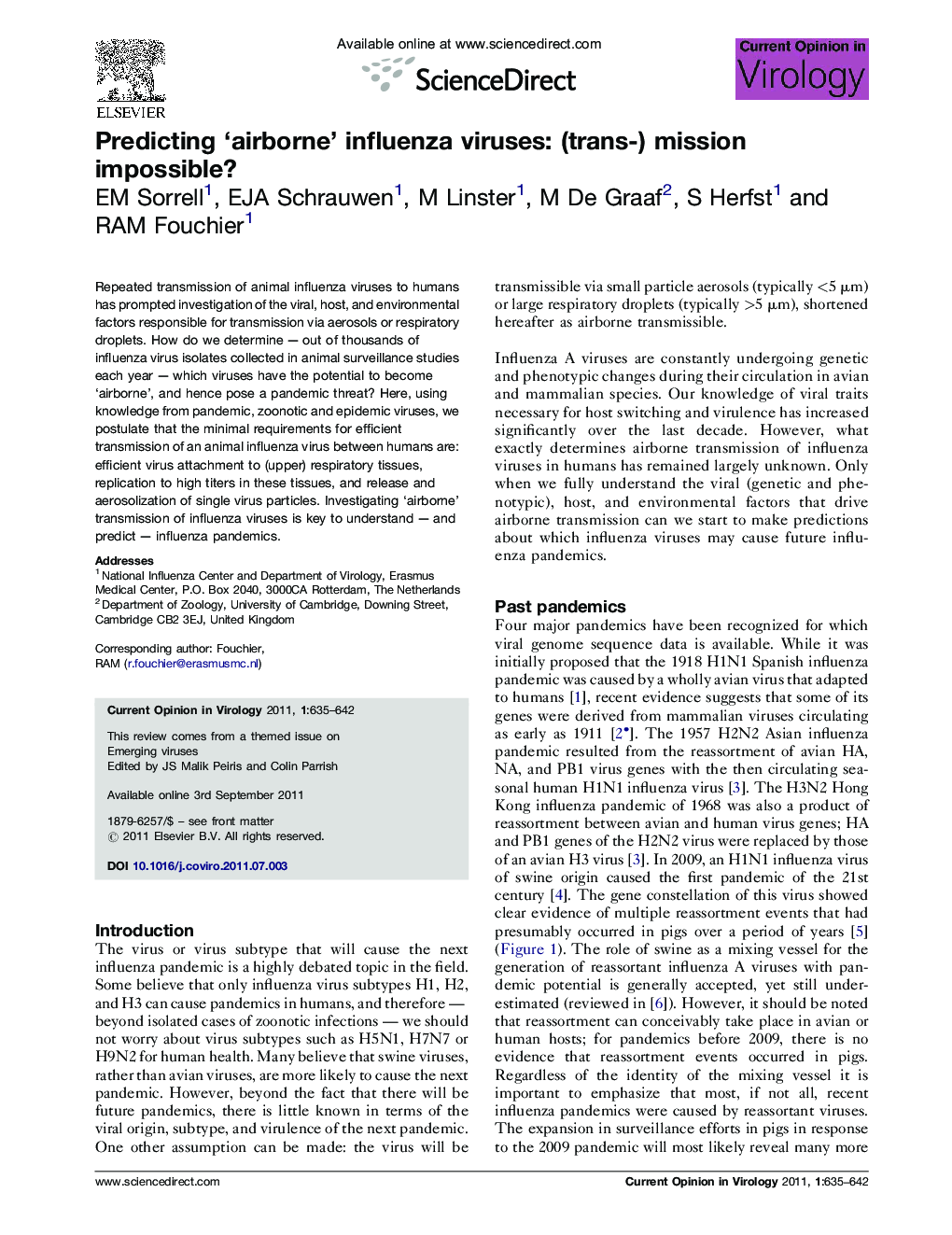| کد مقاله | کد نشریه | سال انتشار | مقاله انگلیسی | نسخه تمام متن |
|---|---|---|---|---|
| 2473420 | 1113014 | 2011 | 8 صفحه PDF | دانلود رایگان |

Repeated transmission of animal influenza viruses to humans has prompted investigation of the viral, host, and environmental factors responsible for transmission via aerosols or respiratory droplets. How do we determine — out of thousands of influenza virus isolates collected in animal surveillance studies each year — which viruses have the potential to become ‘airborne’, and hence pose a pandemic threat? Here, using knowledge from pandemic, zoonotic and epidemic viruses, we postulate that the minimal requirements for efficient transmission of an animal influenza virus between humans are: efficient virus attachment to (upper) respiratory tissues, replication to high titers in these tissues, and release and aerosolization of single virus particles. Investigating ‘airborne’ transmission of influenza viruses is key to understand — and predict — influenza pandemics.
► Airborne transmission is the main mode for influenza virus transmission between humans.
► Viral, host, and environmental factors driving airborne transmission are largely unknown and difficult to elucidate.
► Pandemic influenza viruses acquired airborne transmission via reassortment with human strains and mutations in avian-derived virus genes.
► Virus attachment, replication, release and aerosolization are postulated to represent key factors for emergence of pandemic influenza viruses.
► To predict future influenza pandemics, increasing our understanding of airborne virus transmission is crucial.
Journal: Current Opinion in Virology - Volume 1, Issue 6, December 2011, Pages 635–642